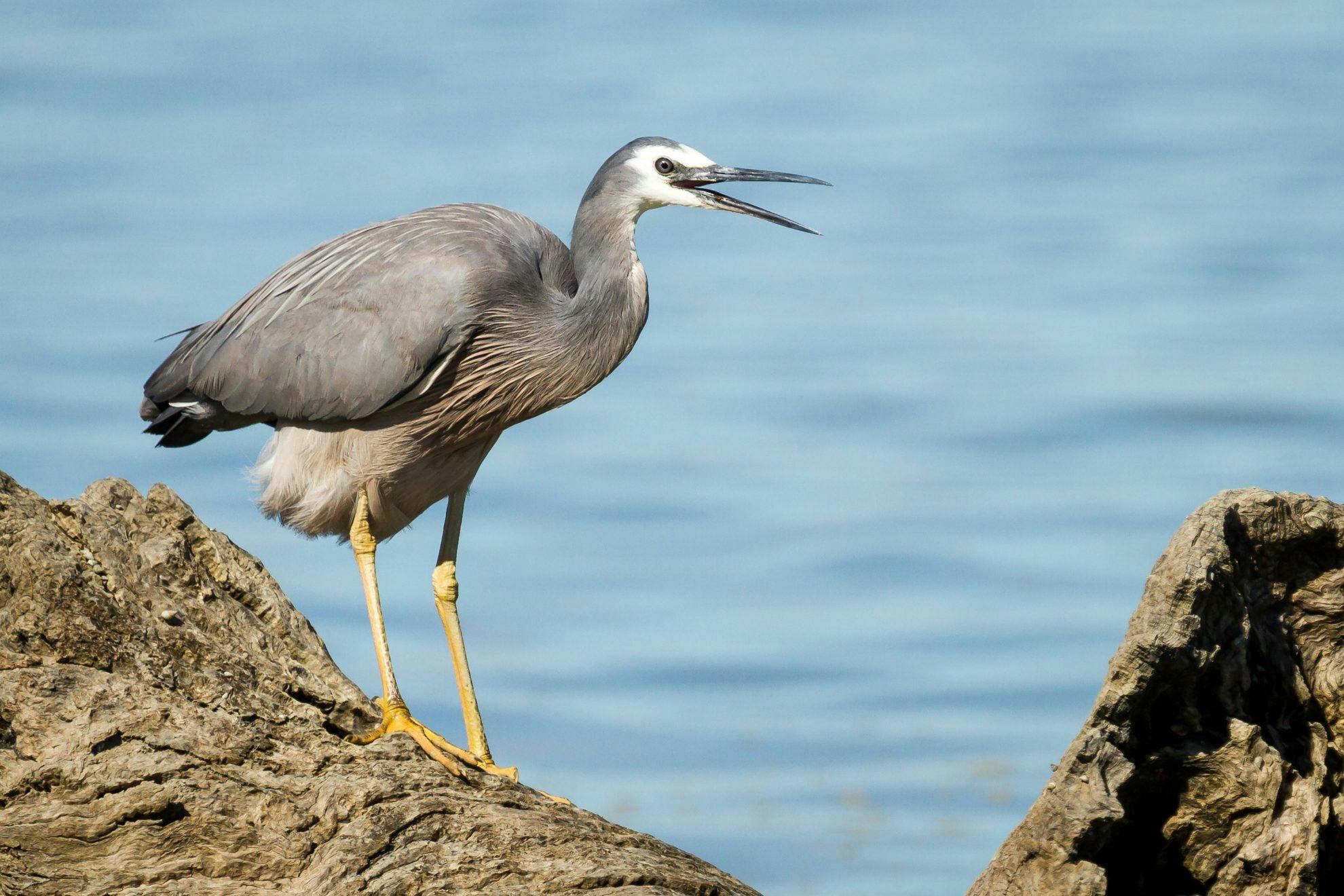From sports fields to estuaries, the white-faced heron can be found wherever it’s wet.
The white-faced heron (matuku) is New Zealand’s most common heron and is often seen stalking prey in a variety of aquatic habitats as well as moist pasture and even sports fields.
Conservation status: Native, classified as ‘not threatened’.
Call: A very harsh and raspy ‘croak’ usually given when in flight.
Nesting: The breeding season can take place anywhere between June and October and of the three to five eggs, usually only two young survive. During courtship and nesting, matuku raise or ‘puff up’ their breeding plumes and perform aerial displays near the nest. A nest consists of a flat pile of twigs and sticks atop large, mature trees such as pines and macrocarpas and there will only ever be one nest in a tree.
Both adult birds will participate in the incubation which lasts 26 days and young birds fledge at 43 days.
Diet: Matuku catch and consume a wide range of prey, including small fish, crabs, worms, insects, spiders, mice, lizards, tadpoles and frogs.
Features: The matuku is a medium-sized heron with primarily blue-grey plumage and a white face and front of neck. The long bill is dark grey with a dull yellow base and the legs are yellow. Adult birds are a tad over 50cm in length and will weigh around 550g.
During the breeding season, the matuku develops long strap-like plumes on its back and some lovely pinkish brown plumes on the breast.
When in flight, the head is tucked into the shoulders.
Bird spotting tip: Matuku frequent rocky shores and estuarine mudflats but can also be found near the shallow edges of lakes up to 500m altitude and on farm ponds and waterways. Following rain, they can be seen on flooded or damp sports fields or even in grassed urban areas. Approach can be fairly easy with slow and deliberate movements, but they will always have their eye on you and take flight when a ‘threshold’ is crossed.








